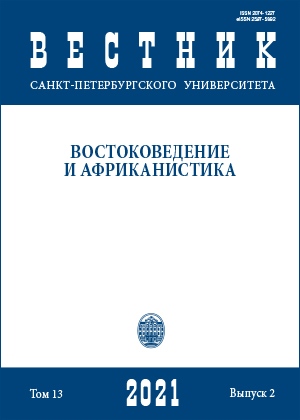Evolution of Masculine Gender Stereotypes in Korean
DOI:
https://doi.org/10.21638/spbu13.2021.206Abstract
The article is devoted to the study of the evolution of masculine stereotypes represented in the Korean language. Language is an integral part of culture, it reflects changes in social consciousness, while the lexis of the language is the first to react to sociocultural transformations taking place in society. The material for the study was Korean traditional paremias, modern proverbs, metaphors, and neologisms about men. Korean traditional paremias convey ideas of hegemonic masculinity and ideas about the absolute superiority of men. Men in Korean proverbs are portrayed from the positive side, they emphasize the dignity and various achievements of men in every possible way. On the other hand, the linguistic material of the modern Korean language allows us to say that conceptualization of masculinity is changing — the male image becomes less authoritarian and new images of natural masculinity are appearing. Contemporary Korean society is still largely androcentric, but society and language have undergone numerous transformations over the years, and new more feminine images of men are replacing the traditional male images of a patriarchal society. Thus, modern metaphors reflect the perception of a person, regardless of gender: modern Korean metaphors about men have much in common with metaphors about women. Modern proverbs about men convey ideas that are opposite to traditional patriarchal ideas, they record a change in social roles and emphasize the increasing social role of women. Korean neologisms represent largely feminized images of men, portraying gentle, authoritarian-minded men with an interest in household chores, fashion, and beauty.
Keywords:
masculinity, gender, gender stereotypes, Korean language, transformation of social consciousness
Downloads
References
Downloads
Published
How to Cite
Issue
Section
License
Articles of "Vestnik of Saint Petersburg University. Asian and African Studies" are open access distributed under the terms of the License Agreement with Saint Petersburg State University, which permits to the authors unrestricted distribution and self-archiving free of charge.





